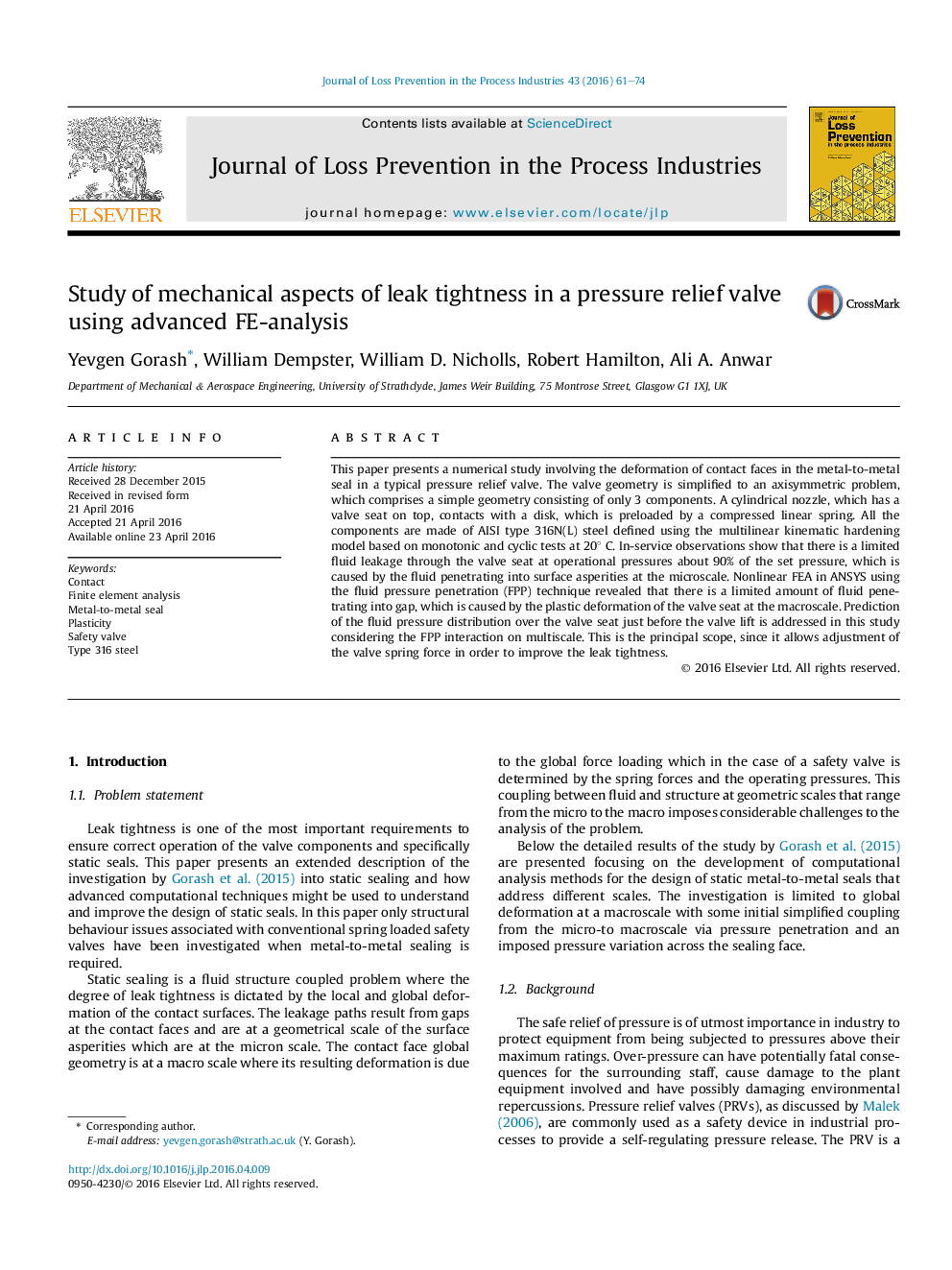| Article ID | Journal | Published Year | Pages | File Type |
|---|---|---|---|---|
| 585911 | Journal of Loss Prevention in the Process Industries | 2016 | 14 Pages |
•The study investigates deformation of contact faces in the metal-to-metal seal.•The pressure relief valve geometry is simplified to an axisymmetric problem.•Monotonic and cyclic plasticity are considered for AISI type 316N(L) steel model.•The valve lift is caused by fluid pressure penetration used in non-linear FEA.•Fluid pressure distribution over the valve seat is predicted before the valve lift.
This paper presents a numerical study involving the deformation of contact faces in the metal-to-metal seal in a typical pressure relief valve. The valve geometry is simplified to an axisymmetric problem, which comprises a simple geometry consisting of only 3 components. A cylindrical nozzle, which has a valve seat on top, contacts with a disk, which is preloaded by a compressed linear spring. All the components are made of AISI type 316N(L) steel defined using the multilinear kinematic hardening model based on monotonic and cyclic tests at 20° C. In-service observations show that there is a limited fluid leakage through the valve seat at operational pressures about 90% of the set pressure, which is caused by the fluid penetrating into surface asperities at the microscale. Nonlinear FEA in ANSYS using the fluid pressure penetration (FPP) technique revealed that there is a limited amount of fluid penetrating into gap, which is caused by the plastic deformation of the valve seat at the macroscale. Prediction of the fluid pressure distribution over the valve seat just before the valve lift is addressed in this study considering the FPP interaction on multiscale. This is the principal scope, since it allows adjustment of the valve spring force in order to improve the leak tightness.
